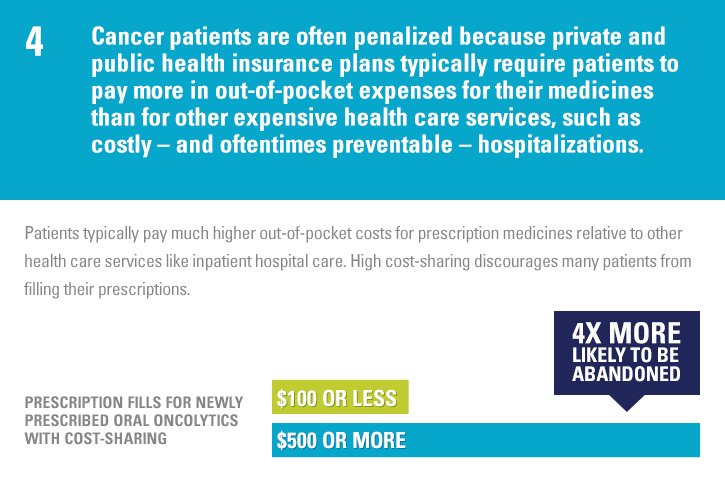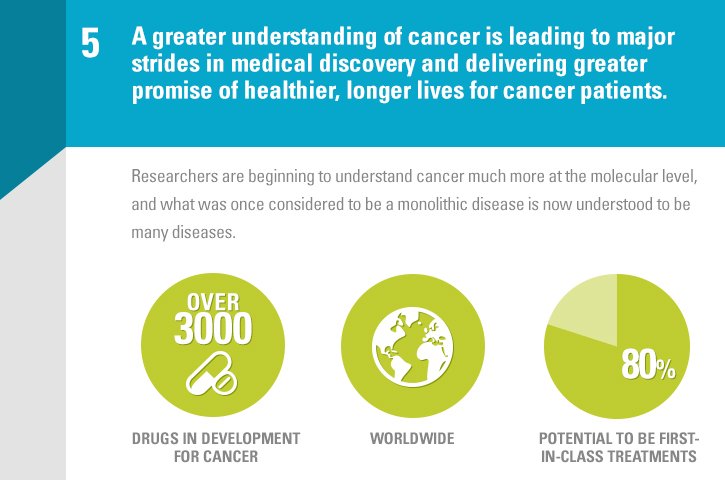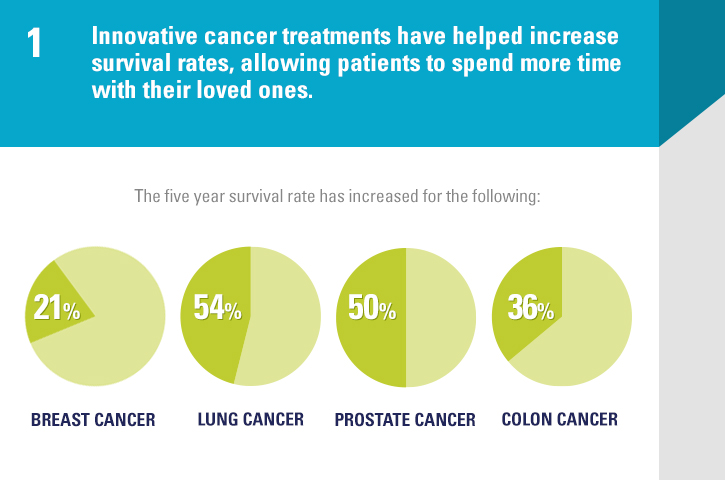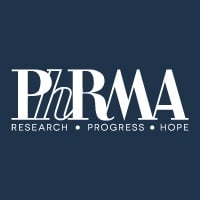There have been a lot of discussions lately about the value and cost of cancer medicines – it is also an issue that will be raised at the upcoming American Society of Clinical Oncology’s (ASCO) annual meeting.
We look forward to celebrating – with other partners in the medical innovation ecosystem – the tremendous progress that has been made to help millions of patients fight cancer. As we look ahead and explore what exciting new treatments are on the horizon, we should all feel proud of how far we have come to help improve patient health today and tomorrow.
In the 1960s, for example, there were a very limited amount of cancer treatment options. Today, patients can spend more time with their loved ones because of the important scientific work that has been done to help build on the arsenal of cancer therapies.

Innovative cancer medicines developed by biopharmaceutical research companies – and other research partners – have led to an increase in patient survival rates and unprecedented improvements in human health around the world. Importantly, the oncology field is rapidly changing and our understanding of the value of cancer therapies continues to grow as new research is conducted. This is an area that will be expanded upon at the Turning the Tide Against Cancer conference on October 9 in Washington, DC – an event PhRMA will be participating in.
Below are five facts about the value of innovative cancer therapies that can help provide further perspective on this important topic:
1. Innovative cancer treatments have helped increase survival rates, allowing patients to spend more time with their loved ones.
- The cancer death rate has fallen by 20% since its peak in 1991, in large part due to medicines.[1]
- Survival is increasing dramatically for many forms of cancer. The five year survival rate has increased 21% for breast cancer; 50% for prostate cancer; 36% for colon cancer; and 54% for lung cancer since 1975.[2]
- The five year survival rate for patients with leukemia has nearly tripled since the early 1990s.[3],[4]
- For children, the five year relative survival rate increased from 58% in the mid-1970s to 83% today due to new and improved treatments.[5]

2. Cancer medicines make up a small portion of cancer care and overall health care spending.
- Pharmaceuticals represent 20 percent of cancer spending for commercially insured individuals, whereas inpatient spending accounts for about 43 percent and other categories make up 37 percent of spending.[6]
- Spending on cancer medicines represented less than 1% of total national health expenditures in 2012.[7]Cancer spending as a percentage of overall health care spending has remained stable at approximately 4-5 percent over the past 30 years.[8]
- Emerging scientific and clinical advances in oncology will help address the growing economic burden of the disease. According to an article published in the Journal Clinical Cancer Research, “With continued support for science and innovation, we foresee accomplishing in oncology what has been achieved against other major public health problems, such as HIV/AIDS, in which scientific advances yielded major gains for patients and averted a predicted health spending crisis.”

3. The investment in cancer research and development has resulted in gains for society that have far outweighed the costs to the U.S. health care system.
- A study found that the investment in cancer R&D since the beginning of the war on cancer generated 23 million additional life-years and $1.9 trillion in value to society overall. Advances in treatment are the primary driver of improvements in survival.[9]
- Research findings from University of Chicago economists Kevin Murphy and Robert Topel show that reducing cancer death rates by 10% would be worth roughly $4.4 trillion in economic value to current and future generations.[10]

4. Cancer patients are often penalized because private and public health insurance plans typically require patients to pay more in out-of-pocket expenses for their medicines than for other expensive health care services, such as costly – and oftentimes preventable – hospitalizations.
- The purpose of insurance is to spread the risk of a substantial loss over a large insured population so that sick patients are not burdened with inordinately high costs for life-saving or life-improving treatment. However, specialty medicines are often subject to greater cost-sharing and utilization management restrictions solely based on cost rather than clinical value.[11]
- Patients typically pay much higher out-of-pocket costs for prescription medicines relative to other health care services like inpatient hospital care – 20% vs. 4% for privately insured patients.
- High cost-sharing discourages many patients from filling their prescriptions. Prescription fills for newly prescribed oral oncolytics with cost-sharing of $500 or more were four times more likely to be abandoned than fills with cost-sharing of $100 or less.[12]

5. A greater understanding of cancer is leading to major strides in medical discovery and delivering greater promise of healthier, longer lives for cancer patients.
- There are over 3,000 drugs in development for cancer around the world. Of those, about 80 percent have the potential to be first-in-class treatments.[13]
- Researchers are beginning to understand cancer much more at the molecular level, and what was once considered to be a monolithic disease is now understood to be many diseases. 100 years ago, leukemia and lymphoma were considered to be one disease but today the two encompass about 100 individual diseases that scientists are tackling with greater precision.
- A growing understanding of the genetic and molecular basis of disease has led to greater use of personalized medicine, which presents a new set of tools to help diagnose and treat patients. These groundbreaking medicines will help transform the treatment paradigm for patients and help address the economic burden of cancer. According to an article from a previous Turning the Tide Against Cancer event, “An ever-expanding understanding of the molecular basis of the more than 200 unique diseases collectively called cancer, combined with efforts to apply these insights to clinical care, is forming the foundation of an era of personalized medicine that promises to improve cancer treatment.”
[1]National Cancer Institute, Surveillance Epidemiology and End Results, (accessed 13 May 2014).
[2] National Cancer Institute
[3] Thirty-one percent 5-year survival rate reported for cases diagnosed during 1991-1992. American Cancer Society. “Cancer Facts and Figures 2012.” Atlanta, GA: American Cancer Society, 2012.
[4] B.J. Druker, et al. “Five-Year Follow-up of Patients Receiving Imatinib for Chronic Myeloid Leukemia.” New England Journal of Medicine 2006; 355(23):2408-17. (Accessed March 2014).
[5] American Cancer Society. “Cancer Facts & Figures 2014.” (Accessed May 2014).
[6] K. Fitch et al. “Benefit Designs for High Cost Medical Conditions.” Milliman Research Report. April 22, 2011. p. 11.
[7] IMS Institute for Healthcare Informatics. Declining medicine use and costs: for better or worse? A review of the use of medicines in the United States in 2012. May 2013.
[8] Source: 1963-1995: Brown ML, Lipscomb J, Snyder C. The burden of illness of cancer: economic cost and quality of life. Annual Review of Public Health 2001;22:91-113. 2004: NIH Cost of Illness Report to the U.S. Congress, 2005; National Health Care Expenditures Projections F.K. Tangka, et al., “Cancer Treatment Cost in the United States: Has the Burden Shifted Over Time,” Cancer (2010).
[9] Lakdawala DN, et al. An economic evaluation of the war on cancer. Journal of Health Economics. May 2010. 29(3):333-346.
[10] K.M. Murphy and R.H. Topel, eds., Measuring the Gains for medical Research: An Economic Approach, (Chicago: University of Chicago Press, 2003), p. 42.
[11] See 2012 EMD Serono Specialty Digest, 8th Edition, p. 10.
[12] Source: Blesser Streeter, S., Schwartzberg, L., Husain, N. & Johnsrud, M., 2011. Patient and Plan Characteristics Affecting Abandonment of Oral Oncolytic Prescriptions. J Oncol Pract, 7(3s), p. 46s–51s.
[13] Analysis Group. “Innovation in the Biopharmaceutical Pipeline: A Multidimensional View.” Boston, MA: Analysis Group, January 2013. (accessed February 2013).








